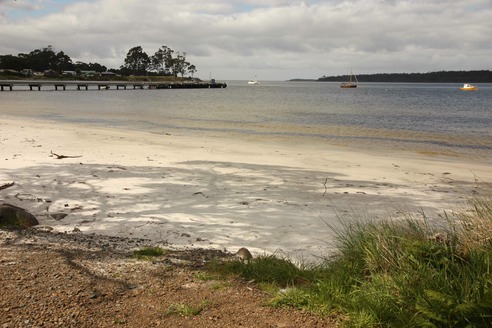
There’s also a degree of lingering controversy associated with Tasmania’s third worst shipwreck, fostered by a sign that describes a massacre of convicts during the wreck of the George III, a convict transport on her way to Port Arthur. There are various versions of the story involving convicts about to make their way towards safety being shot by the ship's officers or the military escort, and a sole convict survivor in the form of a ten year old cabin boy, saved by the captain's wife who hid him under her dress.
The Hobart Courier of 24 April 1835 reports the findings of the Board of Inquiry into the wreck appointed by Governor Arthur. The Board’s report lists the names of 81 convicts who survived, and points out that the prisoners would endeavour to extricate themselves from a situation ... of imminent peril, and it appears they broke down a barricade of the prison with a view to get on deck. That version of events has the sentries over the main hatchway keeping the convicts below deck, and suggests this was just as well because if they had managed to get on deck all at once they’d have rushed the long boat which was the only possible means of rescue and the toll would have been much worse.
The Hobart Courier also reported evidence from convicts concerning threats from the sentries and shots that killed two of the prisoners. Four bodies were alleged to have been washed ashore with gunshot wounds and sabre cuts, but the Coroner concluded the wounds were caused by the rocky shore.
As far as the cabin boy is concerned, it seems there were forty juveniles among the two hundred and twenty convicts on board the ship and a soldier's wife, a Mrs Martin, contrived to secure herself on the fore channel of the ship ... and although the sea ran mountains high with frost and rain ... was exposed for 48 hours to the weather with two babes suckling at her bosoms and her elder child held between her knees. A conflicting report has Mrs Martin enduring a mere eight hours until the long boat returned in the morning to take off a second load of survivors.
While the whole thing seems to support the notion that you never let the truth get in the way of a good story, it’s easy to imagine the details being embellished by opponents of transportation and an attempt to whitewash the details by the colonial authorities.